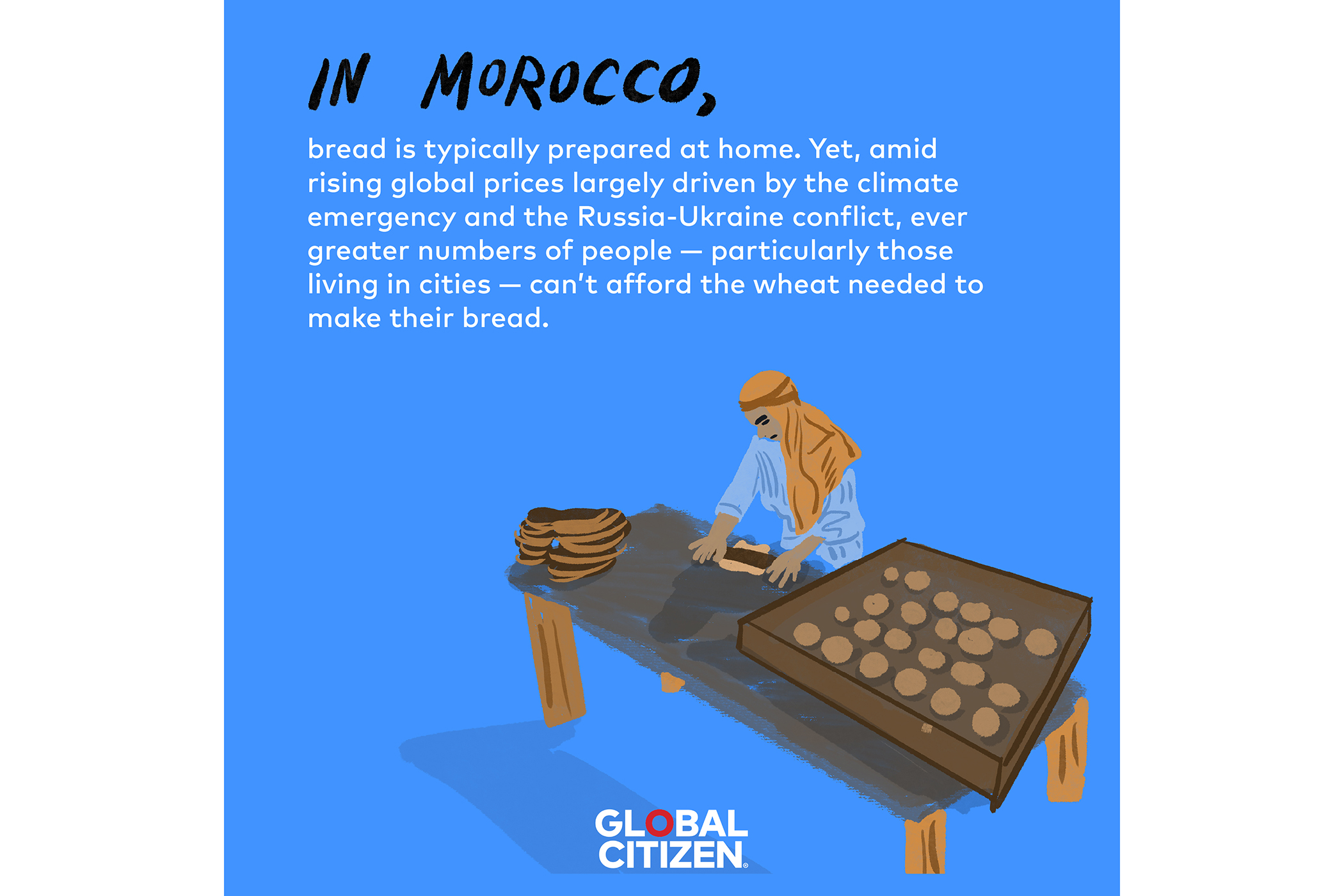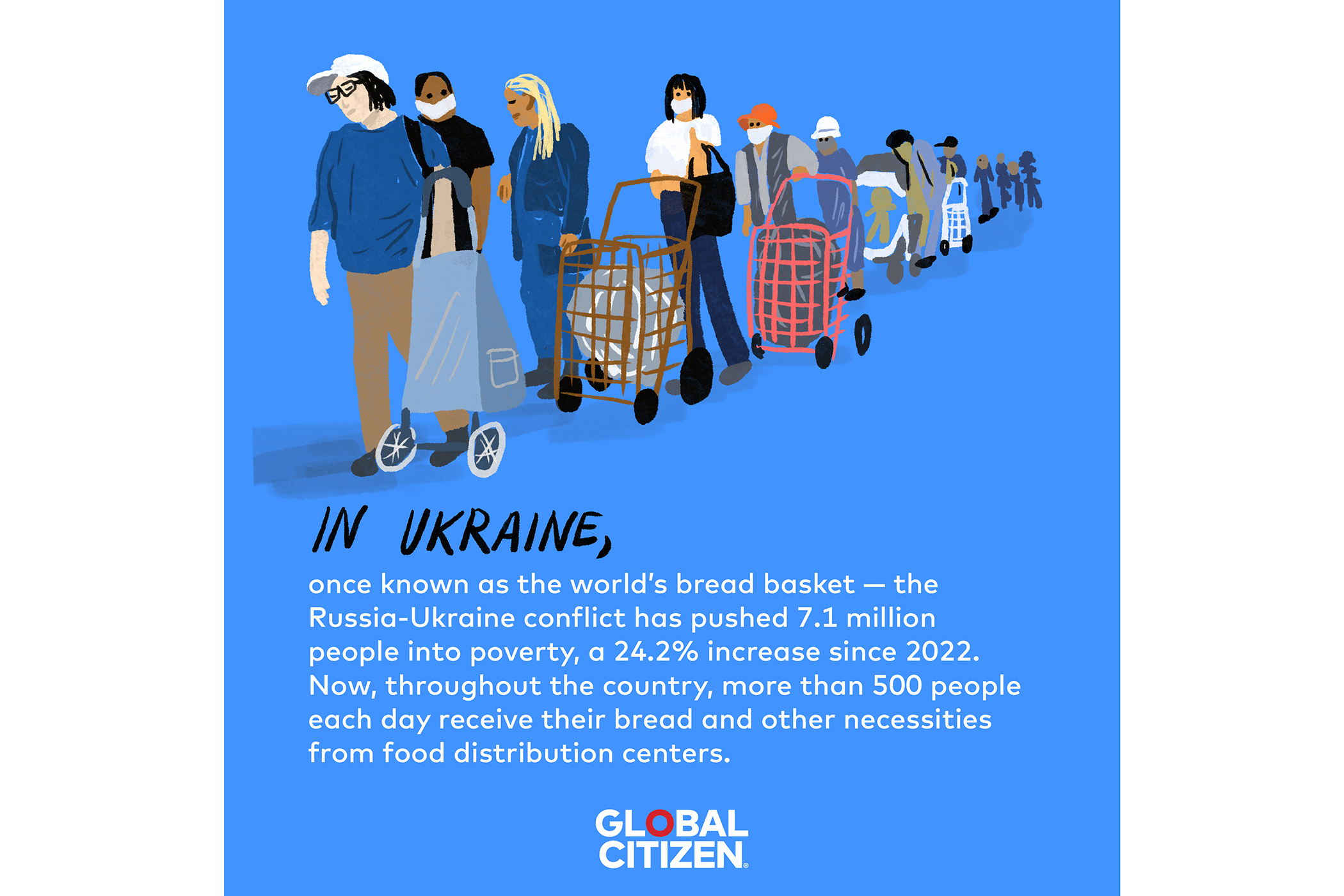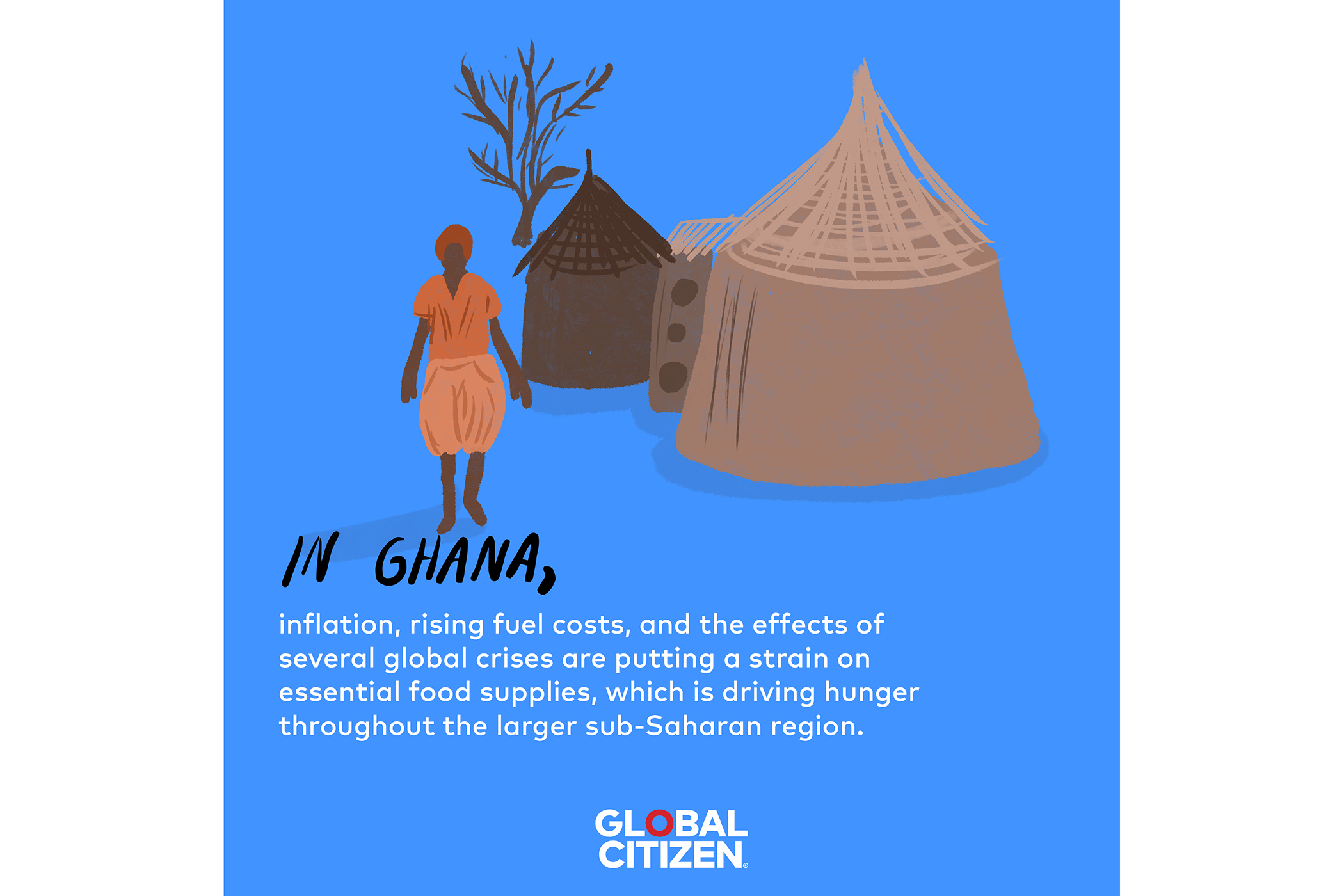The “breadline” is more than a metaphor; it is a daily struggle faced by millions of people worldwide who can’t afford basic food.
As the number of people facing hunger rises dramatically around the world — amid climate, food, and cost-of-living crises — bread itself becomes an important symbol of what so many are lacking.
Because how do you visualize, or express, extreme rates of rising hunger, the reality of that for people, and how hunger and poverty intersect?
Bread can be a good place to start.
In Morocco, bread is typically prepared at home. Yet, amid rising global prices largely driven by the climate emergency and the Russia-Ukraine conflict, ever greater numbers of people — particularly those living in cities — can’t afford the wheat needed to make their bread.
In Ukraine — once known as the world’s bread basket — the Russia-Ukraine conflict has pushed 7.1 million people into poverty, a 24.2% increase since 2022. Now, throughout the country, sometimes more than 500 people each day receive their bread and other necessities from food distribution centers.
Meanwhile in Egypt, nearly a third of the 109 million-strong population live below the poverty line, and many more struggle to get by each day. When, in 2008, then-President Hosni Mubarak raised the price of bread, the chant of “bread, freedom, social justice” echoed through the streets and led to his downfall three years later. Today, Egypt is the world’s largest wheat importer, buying more than 60% of its wheat from abroad.
Maize is also in danger in Ghana. Inflation, rising fuel costs, and the effects of several global crises are putting a strain on this and other essential food supplies for Ghanaians, driving hunger throughout the larger sub-Saharan region.
Putting aside literal bread for a moment, let’s look at the breadline — otherwise known as the poverty line.
The global breadline is essentially the global extreme poverty threshold, or the minimum income an individual can make to survive each day.
We spoke with Asma Lateef, the policy and advocacy lead at the SDG2 Advocacy Hub, which coordinates globally to achieve an end to hunger, to find out more about the state of hunger, how hunger relates to poverty and cost-of-living, and what the solutions are.
As she told us, in low-income countries, the relative cost of a healthy diet is actually much higher than in richer countries, and this has significant consequences.
“High food prices have far-reaching consequences for vulnerable households and communities that go beyond the impacts on food and nutrition,” said Lateef.
“On average, poor households spend a larger share of their household budget on food. When food prices go up, they tend to have to cut back,” she continued. “This can happen in different ways — skipping meals, giving up the more nutritious healthy foods, or not seeking needed health care.”
According to the World Bank, around 42% — or 3.14 billion people — of the global population can’t afford a healthy diet.
In 2021, a healthy diet's global average daily cost stood at $3.66. This is higher than both the $2.15 international poverty line, and the $1.12 food poverty line — which is set at 52% of the international poverty line (based on the average share of income that households in low-income countries spend on food).
This means that, in reality, the hardest hit communities — primarily based throughout Latin America and the Caribbean, sub-Saharan Africa, and South Asia — are having to spend a much higher proportion of their income on just buying food. This means they have to skip out on other essentials, like education or health care, as well as buying less nutritious but cheaper food.
“When food prices go up due to supply chain disruptions as we have experienced globally as a result of the pandemic and the war in Ukraine or weather-related impacts on food production and transportation, it can have a devastating impact on nutrition outcomes,” said Lateef.
As well as the clear health advantages for people, healthier diets are also better for the planet. They cut the social costs of greenhouse gas emissions from diets by up to 75% globally, in addition to being a powerful tool for poverty reduction, environmental sustainability, and global public health.
Lateef shared that today, there are 73 countries and territories currently facing a food emergency, with a quarter of a billion people across four countries experiencing extreme hunger at different levels.
“South Sudan, Burkina Faso, Somalia, and Mali are projected to have people facing catastrophic levels of acute food insecurity this year [2023],” said Lateef. “The global food crisis threatens to reverse decades of progress on hunger, nutrition, health, and other sustainable development goal indicators.”
According to the World Bank, over 90% of people in sub-Saharan Africa cannot afford a nutritious diet.
Many households below the poverty line are also often outside the labor market, or do not find work on a regular basis, which limits their access to both regular income as well as social protection, both of which helps provide food security.
Regular and decent work provides access to social protection for workers and their families, and even younger family members, which serves as a vital safety net, guiding individuals and families toward self-sufficiency and breaking the cycle of poverty.
For the vast majority of the people who live in extreme poverty in rural areas and rural communities in low- and lower-middle income countries, one key solution is prioritizing the needs of smallholder farmers — who are responsible for producing about a third of the world’s food.

“The majority are smallholder farmers and small-scale food producers and many are women — interventions that directly impact the food and nutrition security and livelihoods of smallholder farmers and their households have been found to have the biggest impact [on hunger],” said Lateef.
By 2050, current global warming projections could result in most of Africa losing 30% of its current maize and banana growing areas and 60% of its bean growing areas.
“With the right kind of support, smallholder farmers can contribute to diversifying food production, bringing down the cost of a healthy diet, mitigating climate change through regenerative agriculture and agroecological approaches, and transforming local and regional food systems to deliver better nutrition equitably and sustainably,” said Lateef.
And when it comes to basic commodities like bread, recent studies suggest that smallholder farmers can produce wheat profitably when they get the necessary support.
For Lateef, addressing extreme poverty means addressing extreme hunger on a global scale, and the two aren’t mutually exclusive.
“We know many of the solutions that can help the world to achieve food security and poverty reduction — strengthen the livelihoods of smallholder farmers via climate adaptation support and financing, the investment in farmers organizations.”
Disclosure: This content was made possible with funding from the International Labour Organization.



